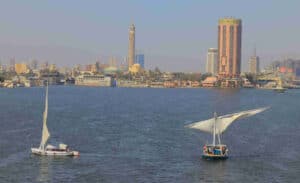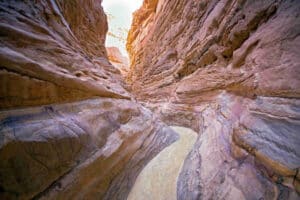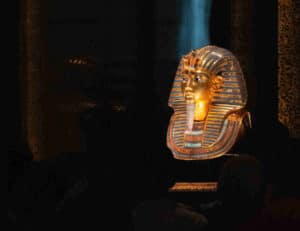The mosque is the most spectacular type of Muslim architecture. However, from a tourist point of view, most of them have an important handicap: they are not open to visitors who do not profess Islam. Therefore, many people who travel to Cairo wonder: is it possible to visit the Alabaster Mosque? In this post we answer and give you some interesting information.
Yes, it is possible to visit the Alabaster Mosque.
Fortunately for international travelers, and especially for those who do not profess Islam, you can visit the Alabaster Mosque in Cairo, respecting some simple rules of access. Moreover, this is maintained even during the days of Ramadan, when it also opens its doors for tourist visits.
The first and most important rule to respect is to take off your shoes when entering the prayer room, something that is done willingly to feel the softness of the carpets that cover the entire space with the soles of your feet. In addition, it is common for the guided groups to sit on it, while listening to the explanations of their guide in a relaxed atmosphere.
Beyond this rule, there are no major restrictions on access, as long as the minimum conditions of decorum are respected, since it is a place of religious worship.
What to visit in the Alabaster Mosque
There is no doubt that the Alabaster Mosque, also called Mehmet Ali (or Muhammad Ali), is one of the great tourist attractions of Cairo, both for its location and its imposing architecture. It is located withinthe Citadel of Saladin and, because it occupies a prominent place, can be seen from many parts of the city, especially the Islamic quarter.
The temple was designed and executed in the mid-nineteenth century, thanks to the commission of the wali (governor) of Egypt Mehmet Ali, at a time when this territory was under Ottoman rule. And in fact, the temple has important Ottoman reminiscences, such as its sharp minarets and its structure of a large dome supported by other small semi-domes. Its sources of inspiration were the Hagia Sophia and the New Mosque, both in Istanbul. Mehmet Ali had the temple built in memory of his son who died years earlier.
Among the most outstanding visitable spaces are:
- Prayer hall: decorated with elegant mosaics and precious stones. Some parts are covered with alabaster, hence its name, highlighting the mihrab and the minbar (pulpit).
- Courtyard: completely arcaded, with semicircular arches supported by slender columns. A fountain in the form of a small temple with reliefs is located in the center.
- Clock Tower: given by the French King Louis Philippe in 1836, in exchange for sending to Paris an obelisk from the Temple of Luxor, now in the Place de la Concorde. Despite its monumental character, it never functioned properly.
- Tomb of Mehmet Ali: brought inside the temple in 1857, its sarcophagus is made of Italian Carrara marble.
Practical information for visiting the Alabaster Mosque
If you are going to visit the Alabaster Mosque, you should take into account the following details for the visit:
- Hours: from 9.00 a.m. to 5.00 p.m.
- Price: Adults 550 EGP. Students 275 EGP. Children under 6 years old, free. However, please note that this is the price of the entrance ticket to the whole Citadel, as the visit to the mosque is included in it.
These prices and schedules may change over time, so we recommend that you make a new consultation before traveling to Egypt to confirm if the information is still correct or if there is any other incident that may affect the visit. The schedules may change slightly depending on the time of year (opening and closing one hour earlier) and during Ramadan (shorter hours).



